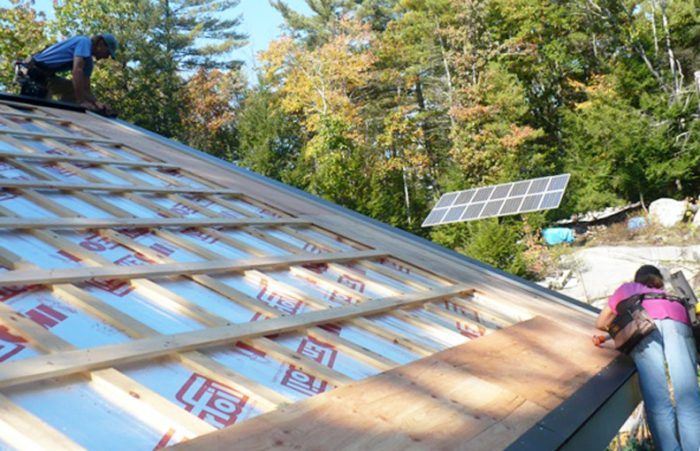Deep-Energy Retrofits versus Reductions
It’s possible to achieve significant energy savings without a deep energy retrofit.

Anyone who is contemplating a deep-energy retrofit has to consider multiple approaches and techniques for taking the diverse building stock we have and transforming it — from the standpoint not just of energy use, but also comfort, health and safety, and durability — because so much of our building stock is plagued with deficiencies. Retrofits fix the issues with the building — and saving energy almost ends up as a desirable byproduct.
If energy saving is the principal goal, it’s important to look carefully at the choices the occupants make. Energy in buildings goes to more than heating and cooling, which are the main loads that retrofits target. Over forty percent of primary energy in U.S. homes goes to non-thermal loads.
Once we superinsulate a house in New England, energy for heating, once the largest load by a comfortable margin, may become the smallest load among heating, domestic hot water (DHW), and plug loads/lighting/appliances (PLA). To get to truly low energy performance then requires focus on domestic hot water and PLA loads.
Deep savings without a deep-energy retrofit
With motivated homeowners, it’s possible to get deep-energy reductions without a deep-energy retrofit. People can do a moderate amount of weatherization work on a house, and then install a point-source heater such as a single-zone minisplit heat pump to keep the most-used part of the house comfortable. The rest of the house runs cooler and the main heating system stays off until the outdoor conditions get severe.
Lots of savings have been demonstrated with this approach. Couple that with LED lighting replacement in high-use fixtures; great low-flow showerheads like the Delta H2OKinetic; a horizontal-axis clothes washer; and (depending on the household size) perhaps a heat-pump water heater. Replace the dryer with a drying rack and a clothesline. Make a concerted attempt to keep appliances and entertainment stuff off when not using it. Hunt down phantom loads.
Combine all of the above, and the total outlay might be $10,000 to $20,000. The energy saved might equal or even exceed what a second household might achieve by going the whole enchilada and doing a deep-energy retrofit, especially if that second household is much less conscious of their domestic hot water and PLA usage, and heats the whole retrofitted house to comfort temperatures.
Relief from ice dams is worth something
I’ve noticed that households that pursue a deep-energy retrofit have a pretty wide range of energy use per person. The climate doesn’t care how we each reduce our consumption, just that we do. Of course a motivated, conserving household living in a house that has undergone a deep-energy retrofit will have the lowest energy usage of all, but if a household is committed to reducing their carbon emissions, they needn’t spend six figures to get there.
What a deep-energy retrofit gets that the other strategy (targeted weatherization and behavior-based deep-energy reductions) may not is relief from the non-energy deficiencies — ice dams, pest infestations, water issues, mold, etc. — and true comfort. The cost of remediating those defects shouldn’t have to be paid for solely by the energy savings that accrue.
Comparing a deep-energy retrofit with weatherization
I live in a zero net energy house that has undergone a deep-energy retrofit. Previously, I weatherized a pretty good house and also reaching zero net energy.
I like the second house a lot better because of its superior comfort and air quality. But I spent a lot more money to get there, and the total energy performance isn’t much better, because domestic hot water usage and PLA loads are pretty similar. The deep-energy retrofit house uses less energy for heating at an even 70°F setpoint than the pretty good house used with some temperature setback and letting parts of the house get cooler. I hope to live in this retrofitted house for a long time, and it’s worth it to me to have spent what I did to get a house my wife and I are so pleased to inhabit. I’m just not fooling myself that I needed a deep-energy retrofit to achieve deep-energy reductions, if that was my only goal.
A deep-energy retrofit course
I’m excited because I’ve been putting together a new online course on deep-energy retrofits. Because there are so many different buildings and conditions, and therefore solutions, the course is based on case studies, and we show many approaches that people have chosen to implement.
To learn more about the transformative possibilities of deep-energy retrofits, click on the link for the ten-week Deep-Energy Retrofit online course, and join me starting September 14th.
Originally published on GreenBuildingAdvisor.com.




